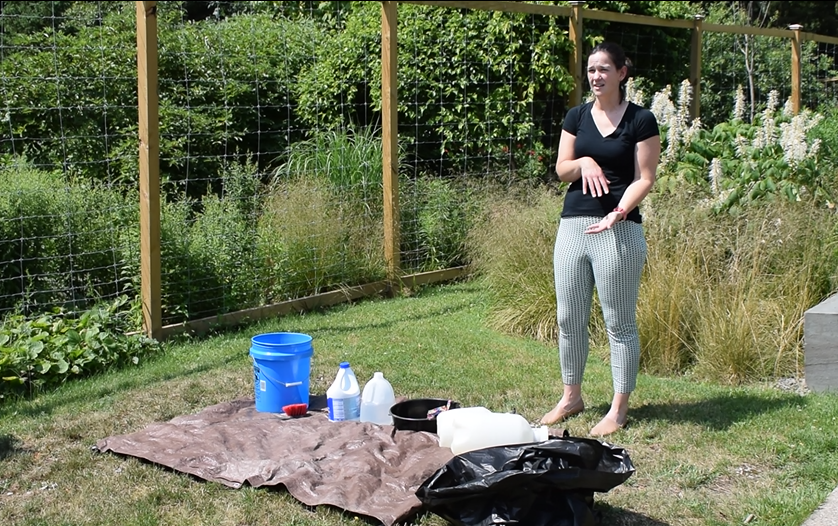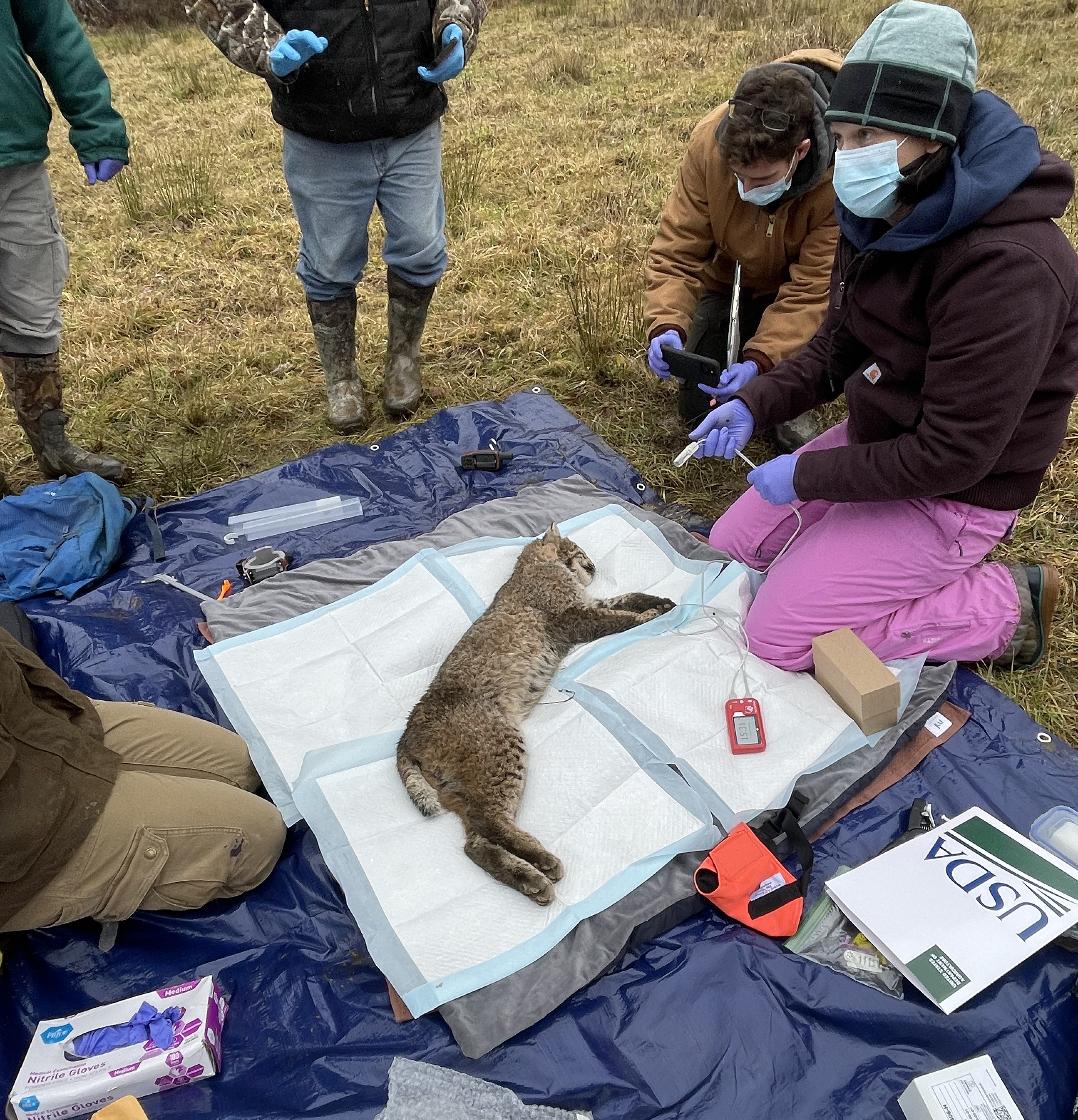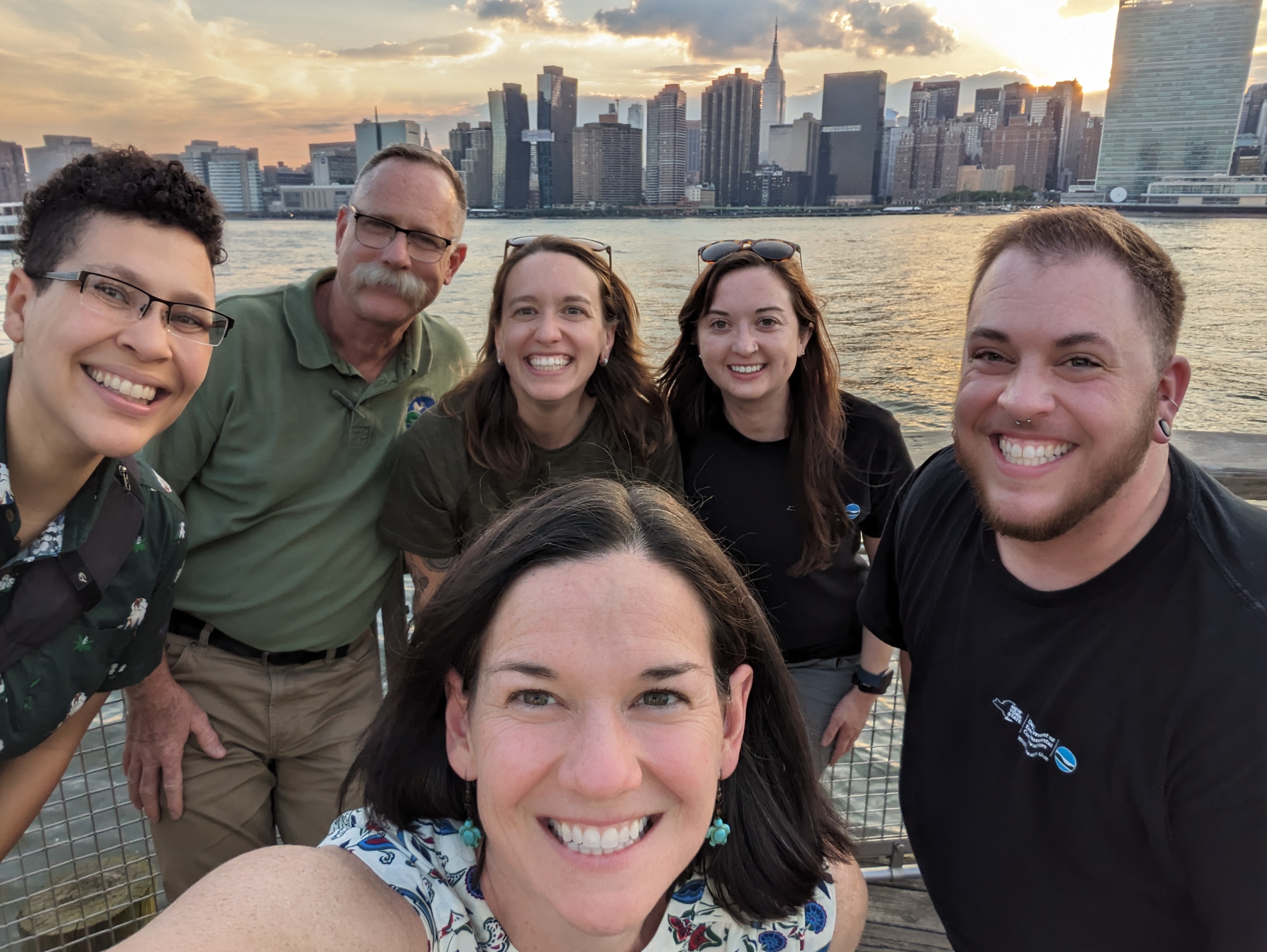Wildlife Veterinarian: Jenny Bloodgood
Serving as the veterinarian for the CWHL keeps me on my toes, and July has been no exception! On a given day, I might be coordinating with our DEC or regional partners, working on a paper or grant, giving a presentation, mentoring interns or students, and/or working out in the “field” on a wildlife health project.
My typical day begins at 6 am. I take our dog, Zoey, on a walk and do a quick exercise video. Lately, I’m into yoga sculpt – it gets my mind in the right place for the day. Then it’s time to make some breakfast and head to work. Once I’m at my desk, I always start with checking emails and making my to-do list for the day. I’ve found that “triage” does not apply only to the medical field – I triage my work priorities too! Today I’m catching up from being on vacation, while also covering for one of our pathologists and our Research Support Specialist. That means, in addition to my usual work, I’ll perform necropsies, accession any samples that are submitted, and enter testing results into our database. There are already a few results from over the weekend ready for me to tackle today.
On my to-do list for the day is to unpack all the supplies from our recently completed Wildlife Health Workshop series with the DEC biologists. We traveled around the state to give presentations and hands-on opportunities to biologists who encounter wildlife in their work. I gave presentations on some “hot topic” diseases and euthanasia methods for wildlife and led a hands-on workshop about biosecurity, personal protective equipment (PPE), and sampling for a mock amphibian disease outbreak.
I also need to provide comments on a journal article I’m working on in collaboration with some of our colleagues across campus. I was fortunate to serve as the veterinarian for a project looking at the movements, density, and health of bobcats in New York State. This manuscript is a short report on some of the health data. It’s almost ready for submission, so keep your eyes peeled for that to be published!
The other major thing I want to accomplish today is to touch base with collaborators on a marine mammal grant we submitted last year which I recently learned was funded! The funds will help pay for necropsies of large whales that strand in NY and NJ, histopathology services for marine mammal cases from NY all the way south to VA, and training resources and opportunities related to marine mammal stranding response. It’s exciting to have this opportunity to support the important work that marine mammal stranding responders do and to train the next generation of stranding veterinarians and pathologists!
I typically end my workday around 5 pm and head home to spend time with my husband and dog. We’ll go on a long walk and make something yummy for dinner. We often watch a show or catch up on some housework. Before bed, we play the daily NY Times games (Spelling Bee is my favorite!), I do a Duolingo lesson (I’m almost on a 600-day streak!), and I’ll read a few chapters of my latest book. Then it’s off to sleep in preparation for tomorrow!





